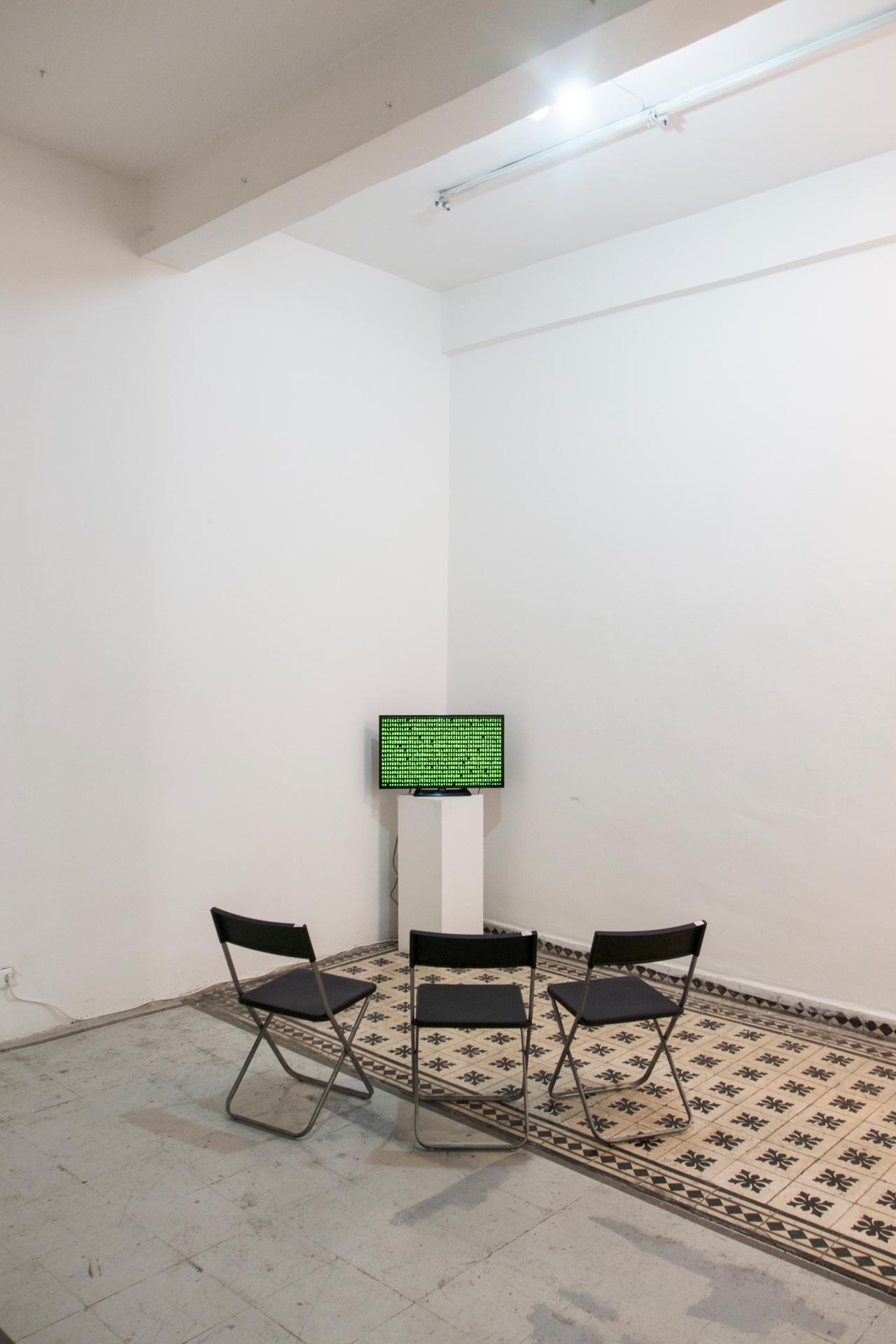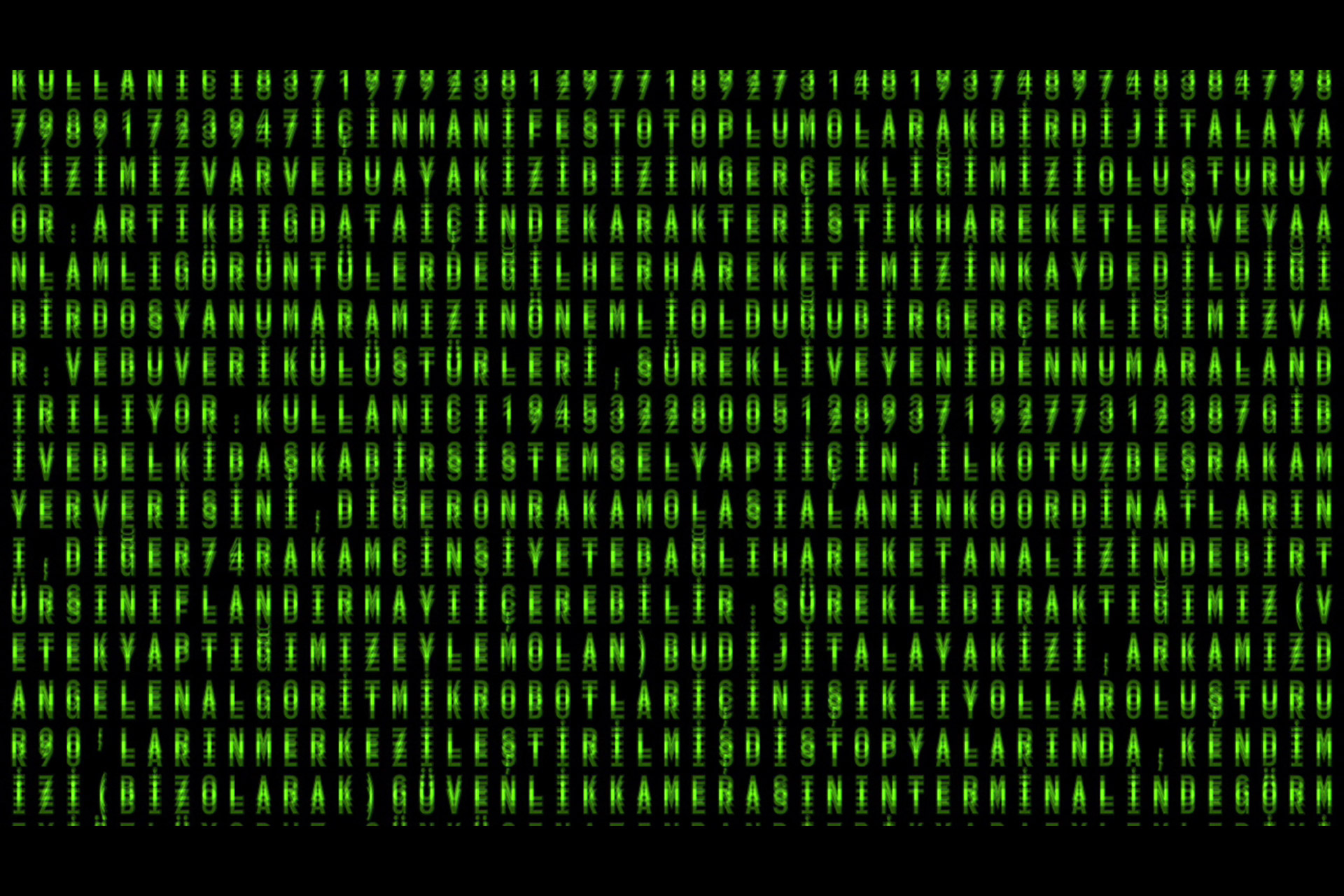manifest for user8371979238129771892
HD Video, 3′
2018
manifest for user8371979238129771892 presents an encrypted manifesto embedded within terminal code lines, conceived as a critical framework for future data laborers. Operating at the intersection of digital labor and systemic surveillance, the work interrogates the evolving relationship between users, data infrastructures, and algorithmic control. The manifesto, concealed in a format emblematic of technical opacity, critiques the commodification of digital footprints—a reality where human activity is reduced to quantifiable inputs for automated systems.
Central to the text is the notion of sub-class users, entities whose interactions—whether consenting to unread contracts or generating data through passive engagement—sustain opaque infrastructures. These users are framed as unwitting contributors to systems that prioritize operability over agency, where even perceptual realities are shaped by interface changes or algorithmic reconfigurations. The manifesto contrasts historical dystopian visions of surveillance (e.g., 1990s centralized monitoring) with contemporary data extraction, arguing that modern users forfeit representation in exchange for fragmented, hyper-visible existences.
The work further critiques data visualization practices, rejecting their veneer of observational neutrality. Instead, it positions users as dual agents: both laborers who sustain data-mining architectures and raw material for its processes. By encoding these themes within terminal code—a medium synonymous with systemic control—the project mirrors its subject matter, embedding critique within the very structures it examines.
Ultimately, the manifesto calls for proactive acknowledgment of systemic truths, underscoring the urgency of redefining agency in an era where bodily and digital integrity dissolve into interchangeable data streams. It situates itself as a provocation, urging recognition of collective complicity in perpetuating algorithmic hierarchies.
"We have a digital footprint as a community. And this footprint makes up our reality. Now we have a reality that big numbers are important to our number of files where every move is recorded, not characteristic movements or meaningful images. And these data collapses are constantly renumbered. user8371979238129771892, and perhaps for another systematic structure, the first thirty-five digits of the location data, the other ten digits of the possible area coordinates, and the other 74 digits may contain some sort of classification in gender-bounded analysis. This digital footprint, which we constantly release (and the only action we do), creates light paths for algorithmic robots that come from behind us. In the centralized dystopias of the '90s, we are pleased to see ourselves at the terminal of security cameras (as we are). Because it was at least us or our actions belonged to us. We are not there anymore. We lost our representation in over-illuminated lighted paths. We are sub-class users, allowing all social media software to use the microphone, or accept the contract without reading it. We do not know what to expect. The change in the system interface, the change in the color of a button, for example, is a constant change in our perceptual unity. As sub-class users, we do not accept the observational artworks of data visualization. We are infrastructure workers. A small part of us builds software that processes data, and the vast majority of it provides data storage. We feed miner robot programs that are actually pursuing operability. And we, our reality, become a raw material. We are no different from the data warehouse with our bodily integrity and all our ability. And another alternative. We have no other choice but to prove this truth proactively and constantly."

